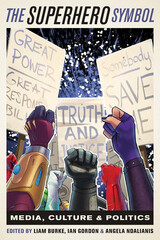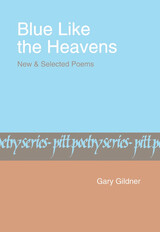2 books by Burke, Liam

Fan Phenomena
Batman
Edited by Liam Burke
Intellect Books, 2013
From his debut in a six-page comic in 1939 and to his most recent portrayal by Christian Bale in the blockbuster The Dark Knight Rises, Batman is perhaps the world’s most popular superhero. The continued relevance of the caped crusader could be attributed to his complex character, his dual identity, or his commitment to revenge and justice. But, as the contributors to this collection argue, it is the fans who, with the patience of Alfred, the loyalty of Commissioner Gordon, and the unbridled enthusiasm of Robin, have kept Batman at the forefront of popular culture for more than seven decades.
Fan Phenomena: Batman explores the unlikely devotion to the Dark Knight, from his inauspicious beginnings on the comic book page to the cult television series of the 1960s and on to critically-acclaimed films and video games of today. Considering everything from convention cosplay to fan fiction that imagines the Joker as a romantic lead, the essays here acknowledge and celebrate fan responses that go far beyond the scope of the source material. And, the contributors contend, despite occasional dips in popularity, Batman’s sustained presence in popular culture for more than seventy years is thanks in no small part to his fans’ ardor.
Packed with revealing interviews from all corners of the fan spectrum—including Paul Levitz, who rose through the ranks of fan culture to become the president of DC Comics, and Michael Uslan, who has executive produced every Batman adaptation since Tim Burton’s blockbuster in 1989, as well as film reviewers, academics, movie buffs, comic store clerks, and costume-clad convention attendees—this book is sure to be a bestseller in Gotham City, as well as everywhere Bruce Wayne’s alter ego continues to intrigue and inspire.
[more]

The Superhero Symbol
Media, Culture, and Politics
Liam Burke
Rutgers University Press, 2020
“As a man, I'm flesh and blood, I can be ignored, I can be destroyed; but as a symbol... as a symbol I can be incorruptible, I can be everlasting”. In the 2005 reboot of the Batman film franchise, Batman Begins, Bruce Wayne articulates how the figure of the superhero can serve as a transcendent icon.
It is hard to imagine a time when superheroes have been more pervasive in our culture. Today, superheroes are intellectual property jealously guarded by media conglomerates, icons co-opted by grassroots groups as a four-color rebuttal to social inequities, masks people wear to more confidently walk convention floors and city streets, and bulletproof banners that embody regional and national identities. From activism to cosplay, this collection unmasks the symbolic function of superheroes.
Bringing together superhero scholars from a range of disciplines, alongside key industry figures such as Harley Quinn co-creator Paul Dini, The Superhero Symbol provides fresh perspectives on how characters like Captain America, Iron Man, and Wonder Woman have engaged with media, culture, and politics, to become the “everlasting” symbols to which a young Bruce Wayne once aspired.
It is hard to imagine a time when superheroes have been more pervasive in our culture. Today, superheroes are intellectual property jealously guarded by media conglomerates, icons co-opted by grassroots groups as a four-color rebuttal to social inequities, masks people wear to more confidently walk convention floors and city streets, and bulletproof banners that embody regional and national identities. From activism to cosplay, this collection unmasks the symbolic function of superheroes.
Bringing together superhero scholars from a range of disciplines, alongside key industry figures such as Harley Quinn co-creator Paul Dini, The Superhero Symbol provides fresh perspectives on how characters like Captain America, Iron Man, and Wonder Woman have engaged with media, culture, and politics, to become the “everlasting” symbols to which a young Bruce Wayne once aspired.
[more]
READERS
Browse our collection.
PUBLISHERS
See BiblioVault's publisher services.
STUDENT SERVICES
Files for college accessibility offices.
UChicago Accessibility Resources
home | accessibility | search | about | contact us
BiblioVault ® 2001 - 2024
The University of Chicago Press









